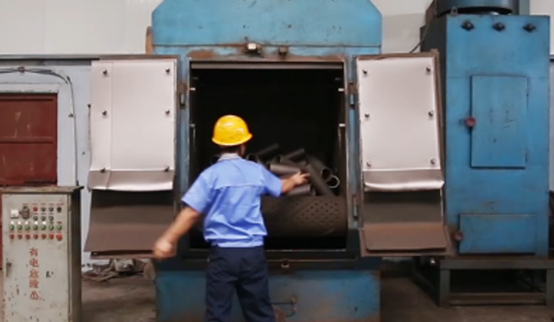 Afrikaans
Afrikaans  Albanian
Albanian  Amharic
Amharic  Arabic
Arabic  Armenian
Armenian  Azerbaijani
Azerbaijani  Basque
Basque  Belarusian
Belarusian  Bengali
Bengali  Bosnian
Bosnian  Bulgarian
Bulgarian  Catalan
Catalan  Cebuano
Cebuano  Corsican
Corsican  Croatian
Croatian  Czech
Czech  Danish
Danish  Dutch
Dutch  English
English  Esperanto
Esperanto  Estonian
Estonian  Finnish
Finnish  French
French  Frisian
Frisian  Galician
Galician  Georgian
Georgian  German
German  Greek
Greek  Gujarati
Gujarati  Haitian Creole
Haitian Creole  hausa
hausa  hawaiian
hawaiian  Hebrew
Hebrew  Hindi
Hindi  Miao
Miao  Hungarian
Hungarian  Icelandic
Icelandic  igbo
igbo  Indonesian
Indonesian  irish
irish  Italian
Italian  Japanese
Japanese  Javanese
Javanese  Kannada
Kannada  kazakh
kazakh  Khmer
Khmer  Rwandese
Rwandese  Korean
Korean  Kurdish
Kurdish  Kyrgyz
Kyrgyz  Lao
Lao  Latin
Latin  Latvian
Latvian  Lithuanian
Lithuanian  Luxembourgish
Luxembourgish  Macedonian
Macedonian  Malgashi
Malgashi  Malay
Malay  Malayalam
Malayalam  Maltese
Maltese  Maori
Maori  Marathi
Marathi  Mongolian
Mongolian  Myanmar
Myanmar  Nepali
Nepali  Norwegian
Norwegian  Norwegian
Norwegian  Occitan
Occitan  Pashto
Pashto  Persian
Persian  Polish
Polish  Portuguese
Portuguese  Punjabi
Punjabi  Romanian
Romanian  Russian
Russian  Samoan
Samoan  Scottish Gaelic
Scottish Gaelic  Serbian
Serbian  Sesotho
Sesotho  Shona
Shona  Sindhi
Sindhi  Sinhala
Sinhala  Slovak
Slovak  Slovenian
Slovenian  Somali
Somali  Spanish
Spanish  Sundanese
Sundanese  Swahili
Swahili  Swedish
Swedish  Tagalog
Tagalog  Tajik
Tajik  Tamil
Tamil  Tatar
Tatar  Telugu
Telugu  Thai
Thai  Turkish
Turkish  Turkmen
Turkmen  Ukrainian
Ukrainian  Urdu
Urdu  Uighur
Uighur  Uzbek
Uzbek  Vietnamese
Vietnamese  Welsh
Welsh  Bantu
Bantu  Yiddish
Yiddish  Yoruba
Yoruba  Zulu
Zulu conveyor pulley parts
Understanding Conveyor Pulley Parts Key Components and Their Functions
Conveyor systems are vital in many industries, from manufacturing to logistics, facilitating the efficient transport of materials and products. At the heart of these systems lies the conveyor pulley, a critical component that plays a significant role in the overall functionality and performance of the conveyor belt. This article delves into the various parts of a conveyor pulley, their importance, and how they contribute to the system's efficiency.
What is a Conveyor Pulley?
A conveyor pulley is a cylindrical device used to support and drive the conveyor belt. It is typically mounted at the ends and sometimes in the middle of the conveyor system. The primary function of a pulley is to provide a mechanism for the belt to loop around, ensuring smooth operation and effective lifting or lowering of materials.
Key Parts of Conveyor Pulleys
1. Drum The drum is the most visible component of the pulley. It is a cylindrical shell that supports the conveyor belt. The drum’s diameter and length can vary based on the application and the type of materials being transported. The surface of the drum is often covered with rubber or other materials to enhance grip and prevent slippage.
2. Shaft The shaft is the central core of the pulley. It provides structural support and allows the drum to rotate. The shaft is typically made from high-strength steel to withstand the forces encountered during operation. It is connected to a motor or other driving mechanism, enabling the pulley to turn and drive the conveyor belt.
3. Bearing Bearings are essential components that reduce friction between the moving parts of the pulley assembly. They allow the shaft to rotate smoothly within the pulley without excessive wear. Proper bearing selection is crucial; high-quality bearings can significantly enhance the longevity and efficiency of the pulley.
4. Hub The hub is the part of the pulley that connects the drum to the shaft. It must be robust enough to handle the torque generated by the conveyor system. Hubs can be either fixed or removable, depending on the design and maintenance needs of the conveyor system.
conveyor pulley parts

5. End Caps These are protective covers on either end of the pulley that secure the drum to the shaft and bearings. End caps help keep the internal components clean from debris and offer structural integrity to the pulley assembly.
6. Lagging Lagging refers to the material applied to the surface of the drum to increase friction and prevent slippage of the conveyor belt. Different types of lagging are available, such as rubber, ceramic, or metal, designed for specific applications and environmental conditions.
Importance of Quality Components
Each part of a conveyor pulley plays a pivotal role in its performance. High-quality materials and precise engineering are crucial for minimizing maintenance costs and ensuring operational reliability. A strong and well-designed pulley system can also lead to less downtime, increased productivity, and improved safety in operations.
Maintenance of Conveyor Pulleys
Proper maintenance of conveyor pulleys is critical to prolonging their lifespan and ensuring the efficient functioning of the conveyor system. Regular inspections should include checking for wear on the drum and lagging, assessing the integrity of the bearings and shafts, and ensuring proper alignment to minimize operational issues.
Conclusion
In summary, conveyor pulleys are integral to the successful operation of conveyor systems across various industries. Understanding the components, including the drum, shaft, bearings, hub, end caps, and lagging, helps shed light on the necessity of quality engineering in their design and manufacture. For companies that rely on conveyor systems, investing in high-quality components and maintaining them meticulously is essential for achieving optimal performance and efficiency. As industries continue to evolve and strive for greater productivity, the significance of conveyor pulley parts will undoubtedly remain paramount.
-
Revolutionizing Conveyor Reliability with Advanced Rubber Lagging PulleysNewsJul.22,2025
-
Powering Precision and Durability with Expert Manufacturers of Conveyor ComponentsNewsJul.22,2025
-
Optimizing Conveyor Systems with Advanced Conveyor AccessoriesNewsJul.22,2025
-
Maximize Conveyor Efficiency with Quality Conveyor Idler PulleysNewsJul.22,2025
-
Future-Proof Your Conveyor System with High-Performance Polyurethane RollerNewsJul.22,2025
-
Driving Efficiency Forward with Quality Idlers and RollersNewsJul.22,2025





























